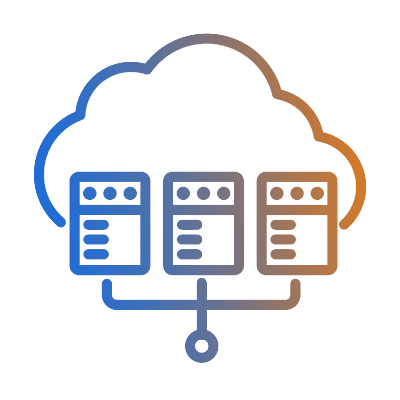Introduction
In the rapidly evolving world of AI and large language models (LLMs), choosing the right framework for your application can be challenging. Two of the most prominent frameworks in 2025 are LangChain and LlamaIndex, each with distinct strengths and use cases.
This blog post will compare LangChain vs LlamaIndex in terms of architecture, core features, performance, and real-world applications to help you decide which one is better suited for your needs.
What is LangChain?
LangChain is a flexible, modular framework designed for building complex LLM applications. It excels in chaining multiple operations, integrating external tools, and managing conversational memory.
Key features:
✔ Chain-based workflows – Enables multi-step LLM interactions
✔ Agent systems – Dynamically selects tools (APIs, databases, etc.)
✔ Memory management – Retains conversation history for chatbots
✔ Multi-model support – Works with OpenAI, Hugging Face, and more
Best for:
- Chatbots & virtual assistants
- Multi-step reasoning applications
- Custom AI workflows with external integrations
What is LlamaIndex?
LlamaIndex (formerly GPT Index) is optimized for indexing and retrieving structured/unstructured data to enhance LLM responses via Retrieval-Augmented Generation (RAG).
Key features:
✔ Efficient indexing – Converts documents into searchable formats
✔ Hybrid search – Combines vector + keyword retrieval
✔ Data connectors – Supports PDFs, databases, APIs
✔ Low-latency queries – Optimized for large-scale datasets
Best for:
- Enterprise knowledge bases
- Document Q&A systems
- Semantic search applications
Core Architecture Comparison
| Feature | LangChain | LlamaIndex |
|---|---|---|
| Design Philosophy | Modular workflow chaining | Data indexing & retrieval |
| Key Components | Chains, Agents, Memory, Tools | Data loaders, Indexes, Query engines |
| Data Handling | Relies on external databases | Built-in document processing |
| Retrieval | Basic vector search (FAISS, Pinecone) | Hybrid (vector + keyword) search |
| Context Management | Advanced memory for conversations | Optimized for query-based context |
LangChain is like a Swiss Army knife—great for assembling custom AI workflows.
LlamaIndex is a precision scalpel—ideal for fast, accurate data retrieval.
Performance & Scalability
LangChain
✅ Strengths:
- Flexible for complex AI pipelines
- Strong in conversational AI (chatbots)
- Integrates with many third-party tools
❌ Limitations:
- Higher resource usage (due to modularity)
- Slower for pure retrieval tasks
LlamaIndex
✅ Strengths:
- 40% faster retrieval than native LangChain in benchmarks
- Optimized for large-scale document search
- Lower memory footprint
❌ Limitations:
- Not ideal for multi-step reasoning
- Limited tool integrations
Real-World Use Cases
When to Choose LangChain?
- Building a customer support chatbot (needs memory & multi-turn conversations)
- AI agents that call APIs/databases (e.g., automated research assistants)
- Multi-modal applications (text + image processing)
When to Choose LlamaIndex?
- Enterprise document search (legal, medical, or financial data)
- Building a RAG-based Q&A system
- Fast semantic search over large datasets
Can You Use Both Together?
Yes! Many projects combine LlamaIndex for retrieval and LangChain for workflow orchestration. Example:
# Hybrid RAG system
from llama_index import VectorStoreIndex
from langchain.agents import Tool
# Step 1: Build a LlamaIndex retriever
index = VectorStoreIndex.from_documents(docs)
query_engine = index.as_query_engine()
# Step 2: Integrate into LangChain as a tool
retriever_tool = Tool(
name="Document Retriever",
func=query_engine.query,
description="Searches company documents"
)
# Step 3: Use in a LangChain agent
agent.run("What was our Q3 revenue?") This setup leverages LlamaIndex’s fast retrieval and LangChain’s agent logic .
Final Verdict: Which One is Better in 2025?
| Choose LangChain if… | Choose LlamaIndex if… |
|---|---|
| You need multi-step AI workflows | You need fast document retrieval |
| Building chatbots/agents | Building knowledge bases |
| Integrating APIs & databases | Optimizing RAG performance |
For most developers:
- If your focus is search & retrieval, LlamaIndex wins.
- If you need flexible AI pipelines, LangChain is better.
- For enterprise RAG systems, combining both is ideal.
Simple Code Example
Same goal: build a simple RAG endpoint over your docs.
LlamaIndex (Python):
# pip install llama-index llama-index-llms-openai llama-index-embeddings-openai
from llama_index.core import VectorStoreIndex, SimpleDirectoryReader, Settings
from llama_index.llms.openai import OpenAI
from llama_index.embeddings.openai import OpenAIEmbedding
Settings.llm = OpenAI(model="gpt-4o-mini") # pick your model
Settings.embed_model = OpenAIEmbedding(model="text-embedding-3-large")
docs = SimpleDirectoryReader("./docs").load_data()
index = VectorStoreIndex.from_documents(docs)
query_engine = index.as_query_engine(similarity_top_k=5)
print(query_engine.query("What are the key tradeoffs in our 2024 pricing?"))LangChain (Python):
# pip install langchain openai chromadb tiktoken
from langchain_openai import ChatOpenAI, OpenAIEmbeddings
from langchain_text_splitters import RecursiveCharacterTextSplitter
from langchain_community.document_loaders import DirectoryLoader
from langchain_community.vectorstores import Chroma
from langchain.chains import RetrievalQA
loader = DirectoryLoader("./docs", glob="**/*", show_progress=True)
docs = loader.load()
splitter = RecursiveCharacterTextSplitter(chunk_size=1000, chunk_overlap=200)
splits = splitter.split_documents(docs)
emb = OpenAIEmbeddings(model="text-embedding-3-large")
vectordb = Chroma.from_documents(splits, embedding=emb)
retriever = vectordb.as_retriever(search_kwargs={"k": 5})
llm = ChatOpenAI(model="gpt-4o-mini")
chain = RetrievalQA.from_chain_type(llm=llm, retriever=retriever)
print(chain.invoke({"query": "What are the key tradeoffs in our 2024 pricing?"}))Both will work. LlamaIndex gives you more out-of-the-box RAG ergonomics (query engines, routers, fusers). LangChain’s strength shows as your workflow grows beyond RAG.
Conclusion
LangChain is the most flexible foundation for complex LLM apps and agentic workflows, with excellent production tooling. LlamaIndex is the fastest route to high-quality, production-grade RAG on your data. Both frameworks are powerful but serve different purposes. LangChain excels in workflow automation, while LlamaIndex dominates in data retrieval.
If you’re unsure, start with LlamaIndex for RAG. As your app grows in complexity, introduce LangChain/LangGraph for orchestration. In 2025, the best approach is often using both together—LlamaIndex for efficient data access and LangChain for intelligent response generation.















































